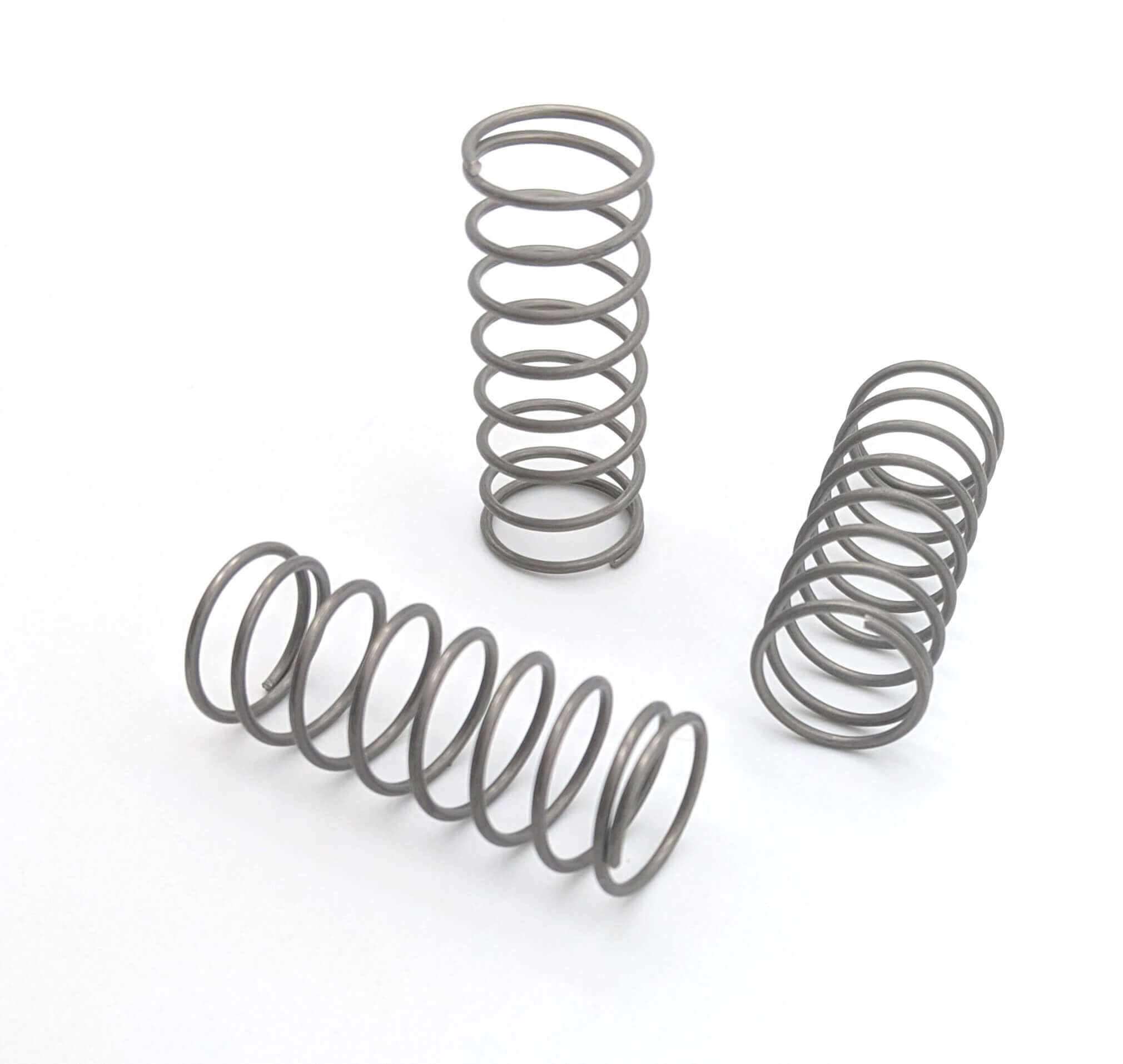Get unique, complex parts easily. No matter your requirements, Chaoyi Spring creates hard-to-produce coil springs and wire forms.
Let us help you create the custom wire form you need, from S-hooks and J-hooks to utility hooks and more.
We work closely with customers across a wide range of industries, helping them design and manufacture made-to-order parts.
Why choose Chaoyi Spring? We prioritize customer-focused collaboration, modern equipment and the latest technology to make your parts per print.
Find the information and guidance you need, from measuring a spring to learning about materials, placing an order and much more.
Stainless compression springs are a type of mechanical spring that is commonly used in a variety of applications. They are made from stainless steel, which is known for its durability


Stainless compression springs are a type of mechanical spring that is commonly used in a variety of applications. They are made from stainless steel, which is known for its durability and resistance to corrosion. This makes them ideal for use in environments where other materials would quickly fail. But with so many different types of stainless compression springs available, how do you choose the right one for your application? This comprehensive guide will explore the factors you should consider when selecting a stainless compression spring.

Stainless compression springs are helical springs designed to resist compression forces. When a load is applied, the spring compresses, storing energy. When the load is removed, the spring returns to its original length. The strength and flexibility of these springs make them suitable for a wide range of applications.
The type of stainless steel used in compression springs can vary depending on the application. Some common types include:
Selecting the right stainless compression spring for your needs depends on several factors:
The spring rate, also known as the stiffness, indicates how much force is required to compress the spring a certain distance. It is measured in pounds per inch (lb/in) or kilograms per millimeter (kg/mm). A higher spring rate means the spring is stiffer and will require more force to compress. The spring rate is crucial for ensuring proper performance in your application. It's critical to match the spring rate to the specific force requirements of your design.
The diameter of the wire used to make the spring affects its strength and flexibility. A thicker wire will result in a stronger spring with a higher spring rate, while a thinner wire will be more flexible. The choice of wire diameter should be based on the load the spring needs to handle and the space available.
The overall length of the spring is important in determining how much it can compress. It's essential to ensure that the spring has sufficient free length to allow for the desired compression without exceeding its limits. It's also important to consider the spring's solid height, which is the minimum length the spring can be compressed to.
Stainless compression springs can have different types of ends, such as closed and ground, open, or hooked ends. The type of end is determined by the application and how the spring will be mounted.
The properties of the stainless steel used in the spring, such as its tensile strength, yield strength, and fatigue resistance, will determine its performance. These properties are critical for ensuring that the spring can withstand the intended loads and conditions.
The environment in which the spring will be used is a significant factor. If the environment is corrosive, a stainless steel with high corrosion resistance is necessary. Temperature extremes can also affect the spring's performance, so you may need to select a material with specific temperature resistance.
Stainless compression springs are highly versatile and find applications in various industries and devices. Here are some common applications:
Stainless compression springs offer several advantages over other types of springs:
Choosing the right stainless compression spring is essential for ensuring optimal performance in your application. By considering the factors discussed in this guide, you can select a spring that meets your specific requirements for spring rate, wire diameter, length, end types, and material properties. Remember that consulting with a spring manufacturer or a design engineer can help you make the best decision for your project. The reliability and durability of stainless compression springs make them a valuable component in a wide range of applications, contributing to the efficient and reliable operation of various systems.
Stainless compression springs are truly versatile and essential components that offer numerous benefits. By understanding their characteristics, selecting the appropriate type, and considering the various factors involved in their application, you can confidently utilize these springs to enhance the performance, durability, and reliability of your systems. Whether it's in the automotive industry, aerospace technology, medical equipment, or countless other sectors, stainless compression springs play a vital role in ensuring smooth and efficient operation.
Browse some of the custom wire forms and springs that we manufacture. Don’t see what you need? We specialize in made-to-order products that meet your application requirements.
Visit Our GalleryNeed a custom wire form or coil spring? We make it work. Fill out the contact form and a representative will respond within 1 business day. If you have a PDF or CAD file, you can submit to request a quote.